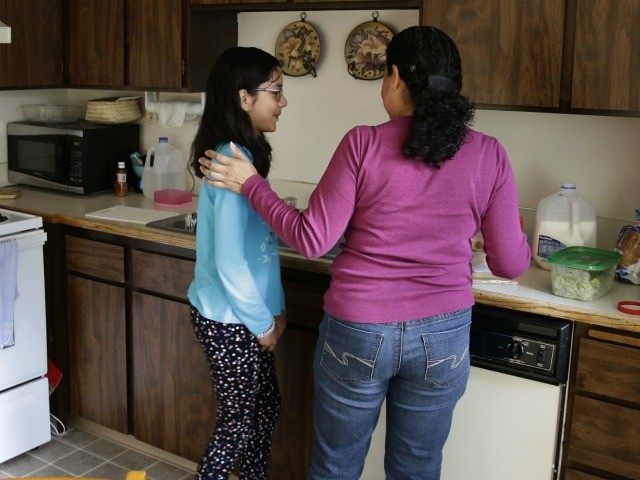Nearly one in 14 children in the U.S. live with a parent who is an illegal immigrant, according to the Migration Policy Institute’s annual compilation of “Frequently Requested Statistics on Immigrants and Immigration in the United States” released this week.
According to MPI’s estimates, between 2009 and 2013, 5.1 million children under the age of 18 lived with an illegal immigrant, or 7 percent of the total population of children in the U.S.
Of those children residing with at least one illegal immigrant parent, 79 percent, or 4.1 million, were born in the U.S. and therefore U.S. citizens. Nineteen percent or 959,000 are in the U.S. illegally themselves, and two percent were green card holders or individuals on temporary visas.
In that same time, some 4 million illegal immigrants, or 39 percent of the illegal population, lived with a child under the age of 18. Of those illegal immigrants living with a minor, MPI estimates that 84 percent, or 3.3 million, were living with a U.S.-born child, or citizen, and 16 percent, or 619,000, were residing with a child who was born abroad.
The U.S. Supreme Court is slated to hear oral arguments in 26 states’ challenge of President Obama’s executive amnesty programs — expanded Deferred Action for Childhood Arrivals and Deferred Action for Parents of Americans and Lawful Permanent Residents (DAPA) — which have, to-date, been blocked by lower courts.
As a group, illegal immigrants with U.S. born or legal immigrant children would likely receive the most benefit from the court finding in favor of the Obama administration’s unilateral pseudo-legalization programs.
According to MPI, while expanded DACA could open eligibility for for an additional 275,000 illegal immigrants — MPI estimates that under the Obama’s current, unblocked, 2012 DACA amnesty program 2 million illegals are eligible — DAPA could open pseudo-legalization and work permits up to 3.61 million illegal immigrants.
“In total, MPI estimates as many as 5 million people—nearly half (46 percent) of the 11 million unauthorized immigrants living in the United States could receive DAPA or DACA status,” the group’s analysis reads.
Currently DACA requires applicants to be 15 years old or older and entered U.S. illegally before June 15, 2007 and resided continuous. The program also requires that the illegal immigrant applicant be enrolled in school or have a high school diploma and limited criminal record (i.e. no felonies, significant misdemeanors or more than three misdemeanors). Expanded DACA opened eligibility up to illegal immigrants who came to the U.S. later and extended the time the designation would last.
DAPA would apply to illegal immigrants who came to the U.S. before January 1, 2010, had a child before November 20, 2014 who is a U.S. citizen or permanent resident, and has no significant criminal record.

COMMENTS
Please let us know if you're having issues with commenting.